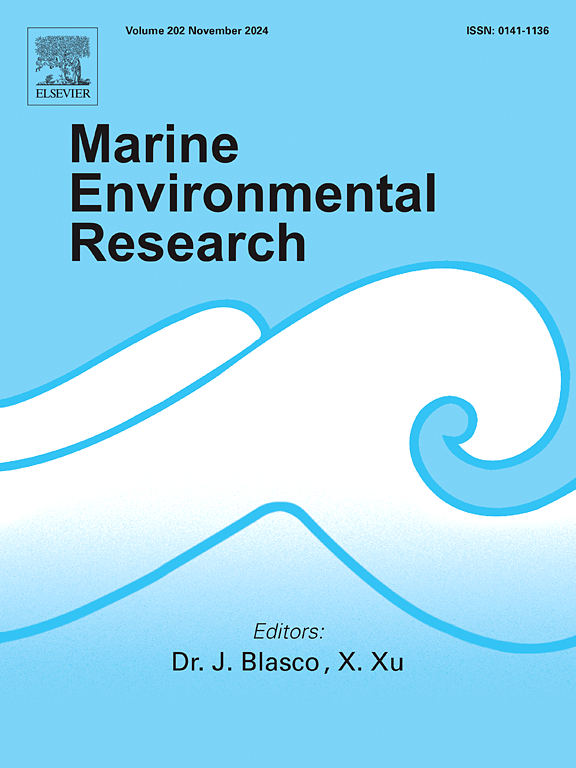The proximity to marine infrastructure affects fish diversity, the occurrence of non-indigenous species, and the dynamic of the sessile communities
IF 3
3区 环境科学与生态学
Q2 ENVIRONMENTAL SCIENCES
引用次数: 0
Abstract
Marine urbanization is changing coastal ecosystems. In this study, we examined how the proximity to recreational marinas influences the structure and recruitment of the sessile community, the diversity of fish, and predation pressure. Sessile communities on marinas supported 68 % more non-indigenous species than those farther from marine infrastructure. Conversely, native species occupied more space in natural habitats, where the diversity of fish was greater. Predation did not influence the diversity or structure of the sessile community, regardless of the habitat type. Nevertheless, predation pressure may be underestimated in artificial habitats due to the lack of connection between platforms and the seafloor. Sessile recruitment tended to be more abundant in artificial habitats. Our findings indicate that even when substrate composition, orientation, and connectivity to the seabed are standardized, proximity to marine infrastructure increases the prevalence of non-indigenous sessile species and diminishes the diversity of potential predatory fish, thereby altering the dynamics of sessile communities.

靠近海洋基础设施会影响鱼类多样性、非本地物种的发生和无根群落的动态
海洋城市化正在改变沿海生态系统。在这项研究中,我们研究了娱乐码头的邻近性如何影响无根群落的结构和招募、鱼类的多样性和捕食压力。码头上无固定的群落比远离海洋基础设施的群落多支持68%的非本地物种。相反,本地物种在自然栖息地占据更多的空间,鱼类的多样性更大。无论生境类型如何,捕食对无根群落的多样性和结构没有影响。然而,由于平台与海底之间缺乏联系,人工栖息地的捕食压力可能被低估。在人工生境中,无根补充更丰富。我们的研究结果表明,即使基材组成、方向和与海底的连通性标准化,靠近海洋基础设施也会增加非本地固着物种的流行,减少潜在掠食性鱼类的多样性,从而改变固着群落的动态。
本文章由计算机程序翻译,如有差异,请以英文原文为准。
求助全文
约1分钟内获得全文
求助全文
来源期刊

Marine environmental research
环境科学-毒理学
CiteScore
5.90
自引率
3.00%
发文量
217
审稿时长
46 days
期刊介绍:
Marine Environmental Research publishes original research papers on chemical, physical, and biological interactions in the oceans and coastal waters. The journal serves as a forum for new information on biology, chemistry, and toxicology and syntheses that advance understanding of marine environmental processes.
Submission of multidisciplinary studies is encouraged. Studies that utilize experimental approaches to clarify the roles of anthropogenic and natural causes of changes in marine ecosystems are especially welcome, as are those studies that represent new developments of a theoretical or conceptual aspect of marine science. All papers published in this journal are reviewed by qualified peers prior to acceptance and publication. Examples of topics considered to be appropriate for the journal include, but are not limited to, the following:
– The extent, persistence, and consequences of change and the recovery from such change in natural marine systems
– The biochemical, physiological, and ecological consequences of contaminants to marine organisms and ecosystems
– The biogeochemistry of naturally occurring and anthropogenic substances
– Models that describe and predict the above processes
– Monitoring studies, to the extent that their results provide new information on functional processes
– Methodological papers describing improved quantitative techniques for the marine sciences.
 求助内容:
求助内容: 应助结果提醒方式:
应助结果提醒方式:


